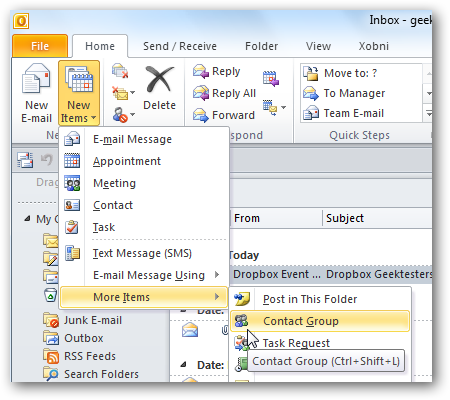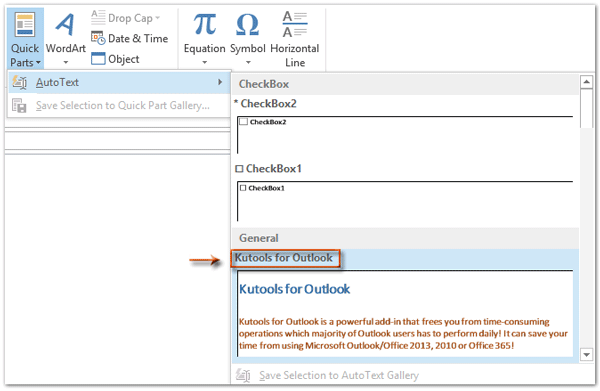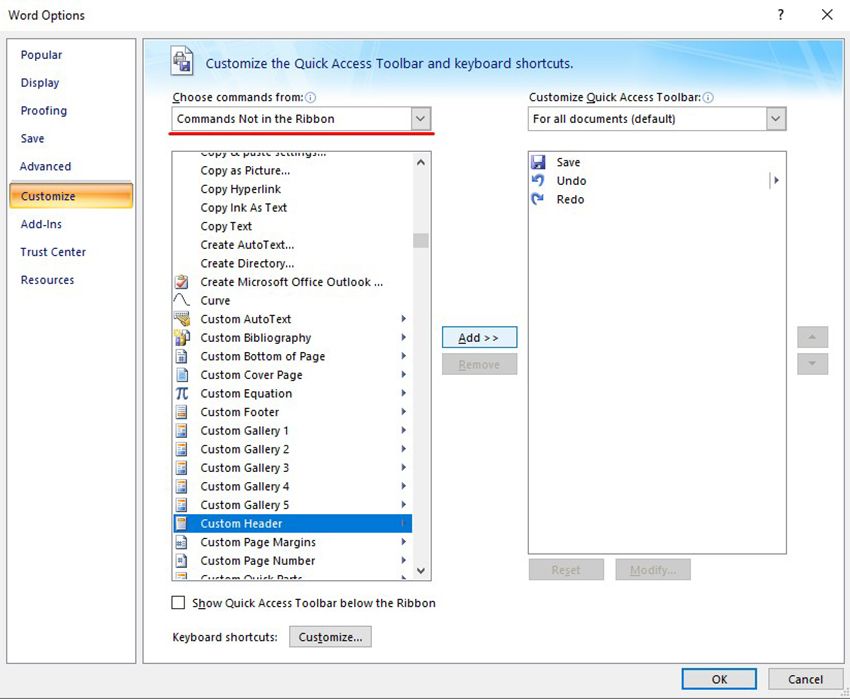

- How do you create autotext in outlook 2010 how to#
- How do you create autotext in outlook 2010 upgrade#
- How do you create autotext in outlook 2010 windows 10#
- How do you create autotext in outlook 2010 software#
If you use templates, you can isolate entries by template.
Save In: Use NormalEmail.dotm if you want the content to be available to all Outlook emails. Description: Meaningful comment that describes the entry, but don't bother, as you'll never see it or use it. Category: Use General unless you have a lot of reusable text and need additional grouping. For the most part, you'll use AutoText and Quick Parts. Gallery: Outlook can save entries in specific galleries, which is helpful if you have lots of reusable content. The feature lists these in alphabetical order, which might be important if you have several. Name: A unique identifier for the entry. Using the dialog, you can specify the following attributes: Both routes display the Create New Building Block dialog shown in Figure A. Choose AutoText or Save Selection To Quick Parts Gallery. Click the Insert tab and then click Quick Parts in the Text group. When the message is complete, select it, and do the following: The quickest way to add an entry to either AutoText or Quick Parts is to type it in an email message and add any desired formatting or graphics. On the other hand, if you like your mouse, you can use the interface to quickly reuse content. If you like working from the keyboard, AutoText is a mouse-less option. Quick Parts and AutoText are similar in purpose how you access them is the biggest difference. For instance, you might reference the current date or even use an expression to return a future (or past) date. Using fields, you can even create dynamic content. Quick Parts and AutoText support formatting, such as color and fonts. Entries can comprise text, document properties, fields, tables, graphics, and more. Quick Parts is a gallery of reusable content (that includes AutoText). By now, you can probably repeat it by rote, but you don't have to. Like most users, you may often send the same message text. SEE: Combine Outlook templates with macros to eliminate repetitive tasks There's no downloadable demonstration file for this article. How do you create autotext in outlook 2010 windows 10#
I'm using Outlook 2016 on a Windows 10 64-bit system, but AutoText is a long-standing feature and available in older versions.
How do you create autotext in outlook 2010 how to#
In this article, I'll show you how to use Quick Parts to reuse common text and graphics to quickly generate messages (and replies). This feature is easy to use and unlike templates, it doesn't require specialized knowledge. But if you don't, you can simulate content-filled templates using Quick Parts. If you're supported by a large organization, you probably have access to templates that contain reusable content. It includes Classic Menu for Word, Excel, PowerPoint, Access and Outlook 2007.Do you spend too much time in the Sent folder looking for perfect message content to reuse? Stop! Do you keep your best content in a Word document and use cut and paste to compile messages? Stop! It includes Classic Menu for Word, Excel, PowerPoint, OneNote, Outlook, Publisher, Access, InfoPath, Visio and Project 2010, 2013, 2016, 2019 and 365.
Easy to show or hide the classic menus, toolbars and ribbon tabs.  Easy to find any command items you want to process. Without any training or tutorials after upgrading, users can work with Office 2007/2010/2013/2016 immediately. All new features and commands of Office 2007, 2010, 2013, 2016, 2019 and 365 have been added to the menus and toolbars.
Easy to find any command items you want to process. Without any training or tutorials after upgrading, users can work with Office 2007/2010/2013/2016 immediately. All new features and commands of Office 2007, 2010, 2013, 2016, 2019 and 365 have been added to the menus and toolbars. How do you create autotext in outlook 2010 upgrade#
The classic view helps the people to smoothly upgrade to the latest version of Office, and work with Office 2007/2010/2013/2016 as if it were Office 2003 (and 2002, 2000). It brings back the classic menus and toolbars to Microsoft Office (includes Word) 2007, 2010, 2013, 2016, 2019 and 365.
How do you create autotext in outlook 2010 software#
The software Classic Menu for Office is designed for the people who are accustomed to the old interface of Microsoft Office 2003, XP (2002) and 2000.
Features and Commands List of Word 2010. Click the down menu next to Quick PartsĬlick to see How to Add and Use AutoText in Quick Access Bar in Word 20. 
Click Save Selection to Quick Part Gallery in the Quick Parts menu, you will successfully add new entry as you want. To create new entry, you can just type or insert the content you need to add in the AutoText, and then put the cursor to the content and select it.
Click Quick Parts in the drop down menuīy the way, the entry in the AutoText only includes user's name and its abbreviation by default. With Classic Menu for Word installed, you can click Menus tab to get back the classic style interface. Just take Microsoft Word 2010 for example, which is as well as in Word 2007. Classic Menu for Office Home and Business. Classic Menu for Office 2007 Applications.







 0 kommentar(er)
0 kommentar(er)
